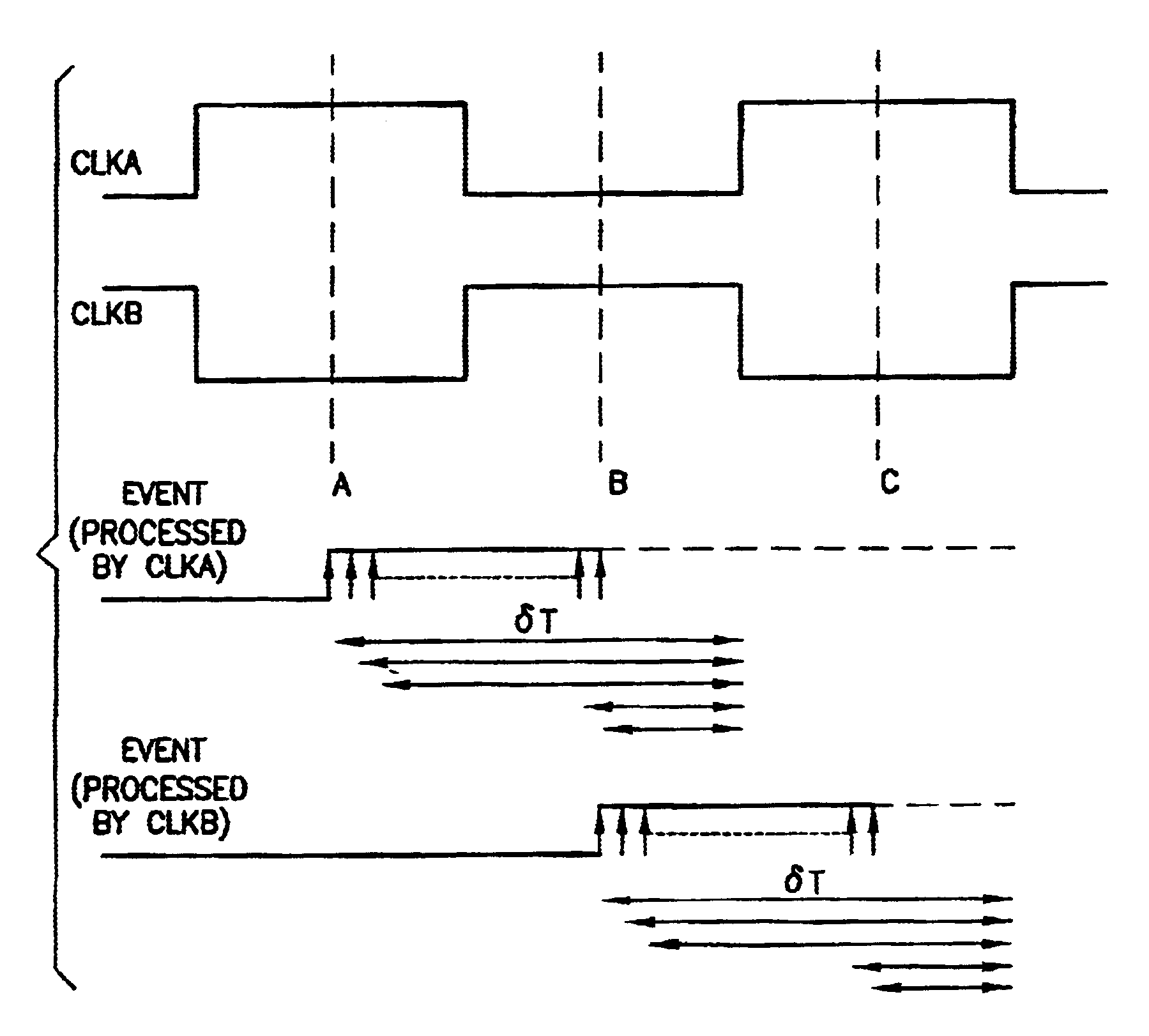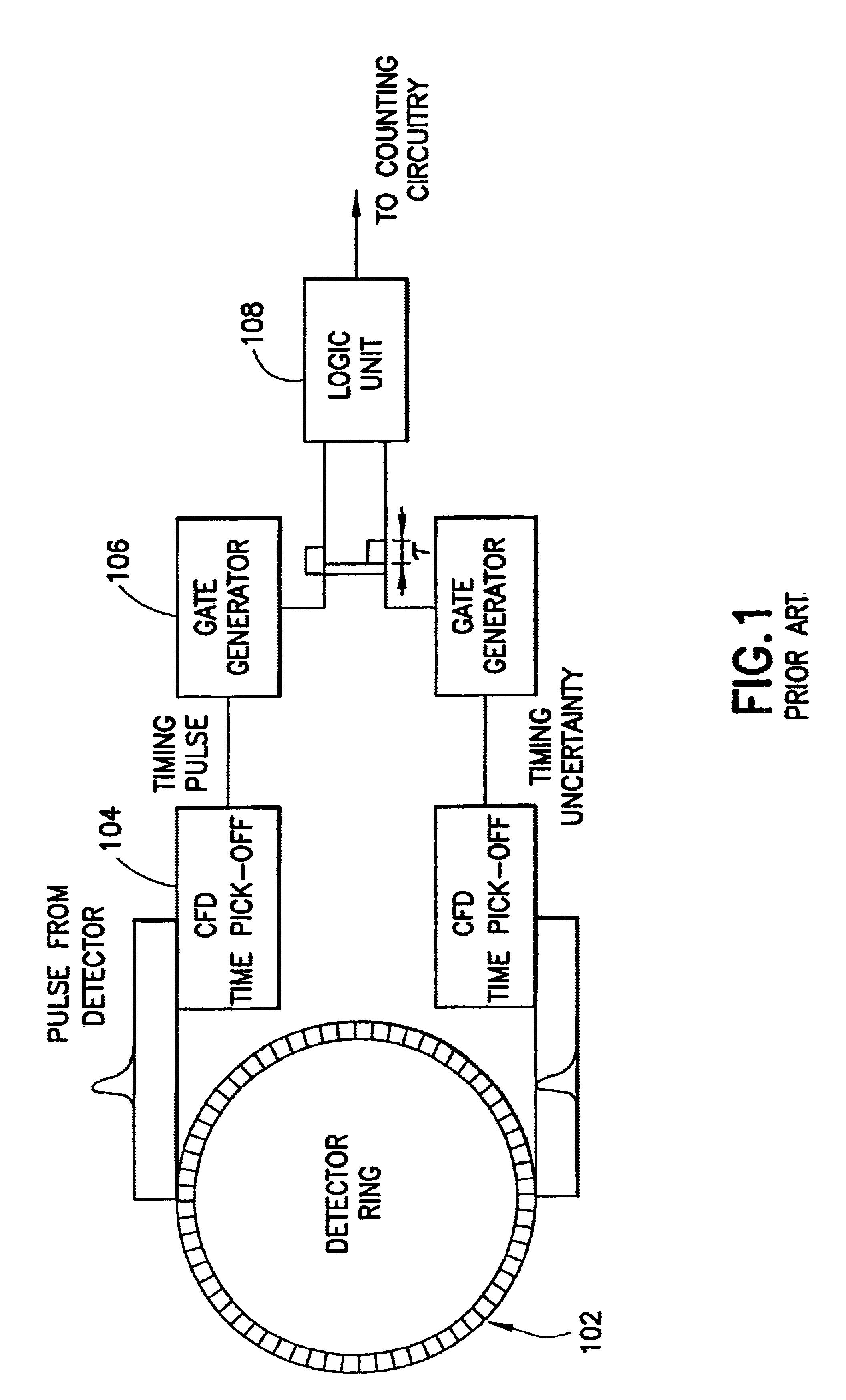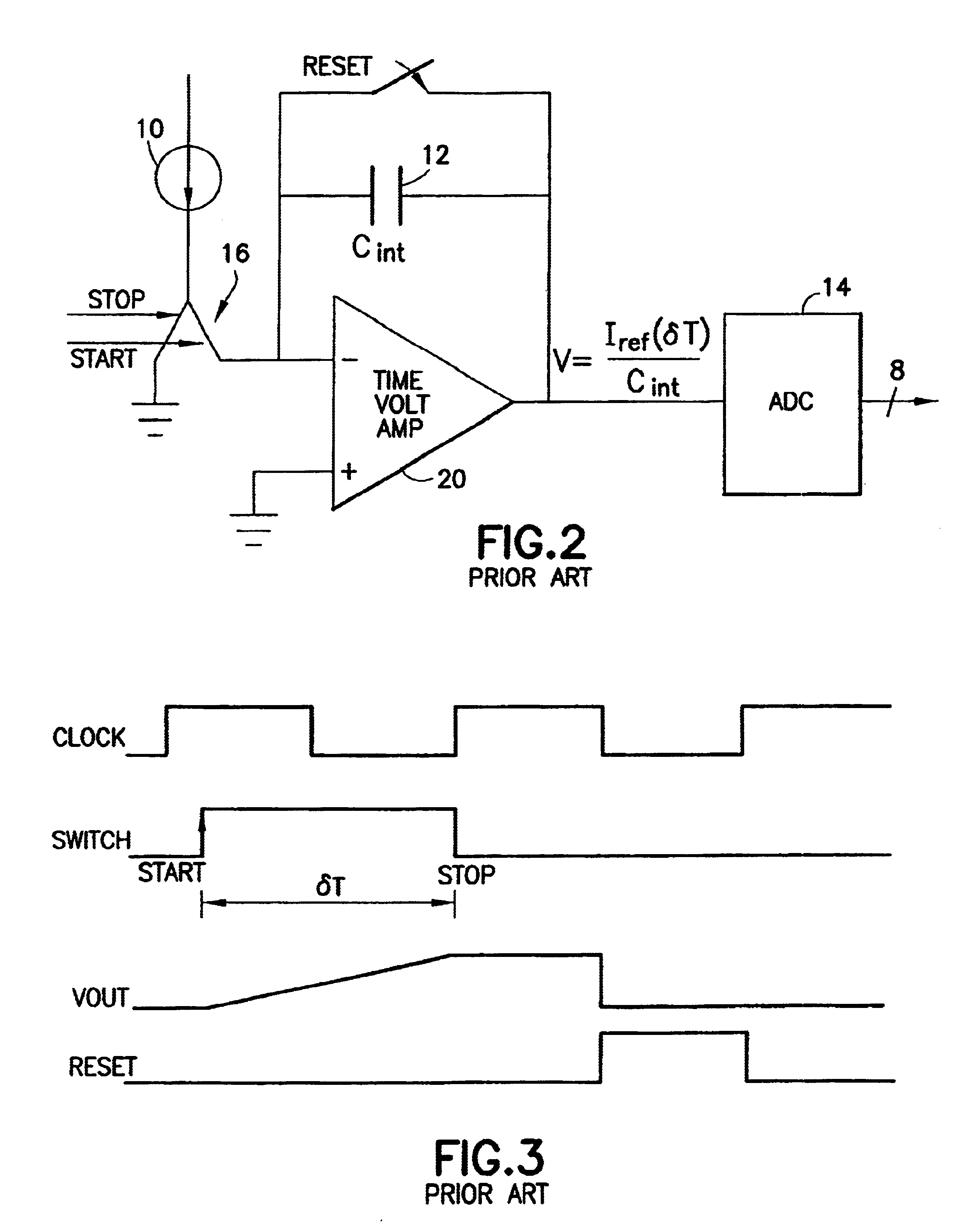Time-to-voltage converter
a time-to-voltage converter and converter technology, applied in the field of time-to-voltage converters, can solve the problems of complex circuits, circuit becomes more nonlinear, digital circuits interfere with the proper operation of switches, etc., and achieve the effect of low nonlinearity
- Summary
- Abstract
- Description
- Claims
- Application Information
AI Technical Summary
Problems solved by technology
Method used
Image
Examples
Embodiment Construction
[0031]Consider the normal operation mode of a time-to-voltage converter when an input event causes the current controlling switch to close in order to charge the integrating capacitor and develop a corresponding voltage. In the embodiments disclosed below, two clocks offset from each other in phase only are utilized in such a way that the case of a clock edge being too close to the event edge can be avoided. This is the principle of a two-phase time-to-voltage converter.
[0032]Respective system level representations of two-phase time-to-voltage converter circuits that obey the general rules described above to yield a very linear time-to-voltage conversion are shown in FIGS. 4 and 5. FIG. 6 shows the timing diagram for the operation of these circuits.
[0033]Referring to FIG. 4, Channel A comprises a current source 10a, an integrating capacitor 12a, a single-pole double-throw START / STOP switch 16a, and a time-to-voltage amplifier 20a, whereas Channel B comprises a current source 10b, an...
PUM
 Login to View More
Login to View More Abstract
Description
Claims
Application Information
 Login to View More
Login to View More - R&D
- Intellectual Property
- Life Sciences
- Materials
- Tech Scout
- Unparalleled Data Quality
- Higher Quality Content
- 60% Fewer Hallucinations
Browse by: Latest US Patents, China's latest patents, Technical Efficacy Thesaurus, Application Domain, Technology Topic, Popular Technical Reports.
© 2025 PatSnap. All rights reserved.Legal|Privacy policy|Modern Slavery Act Transparency Statement|Sitemap|About US| Contact US: help@patsnap.com



